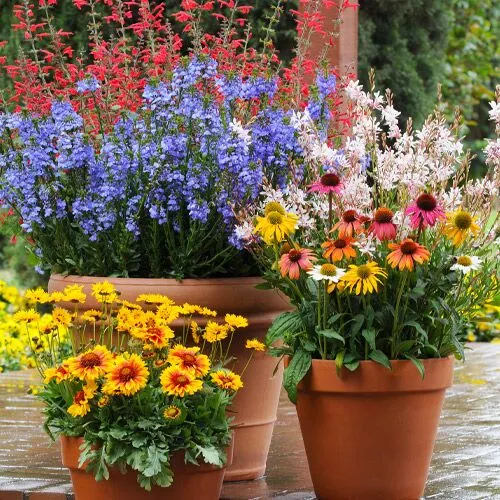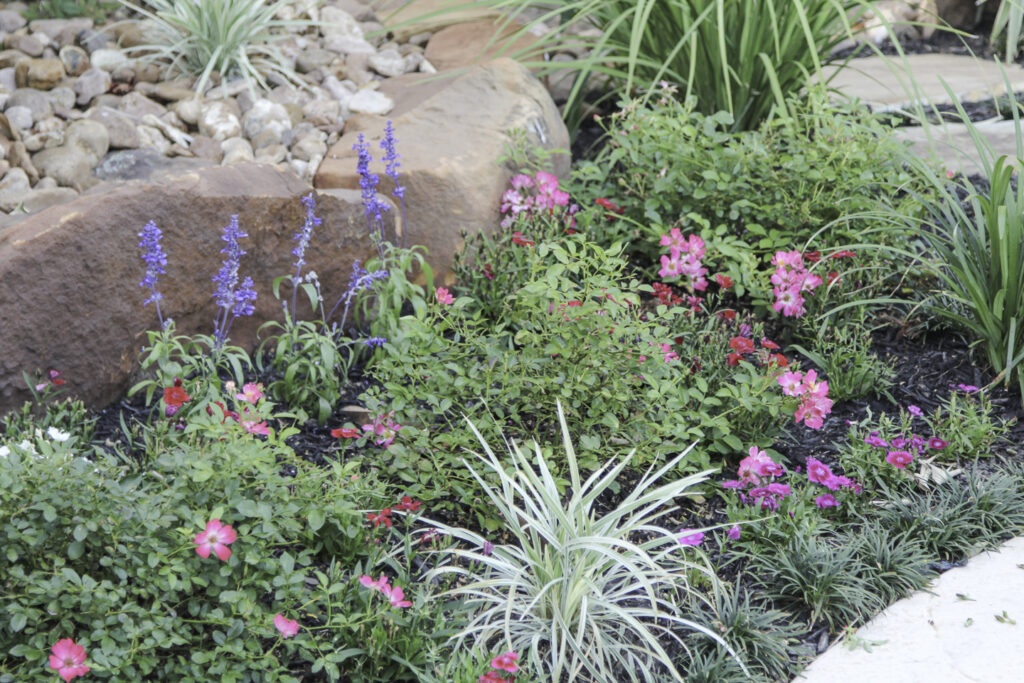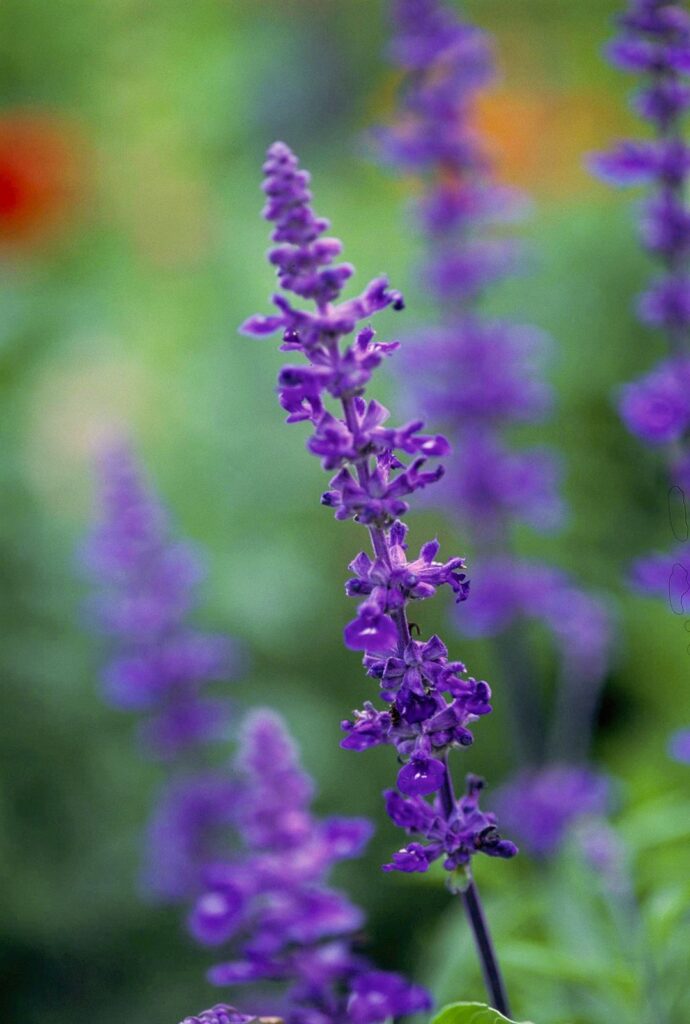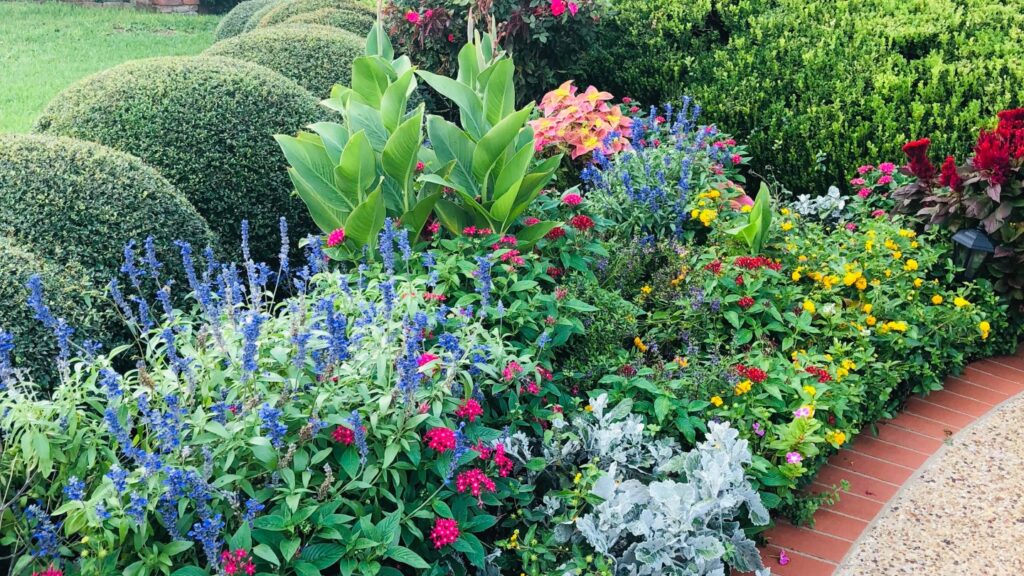Creating a colorful perennial flower bed in Texas is not only possible—it can thrive with the right planning and plant choices. Texas gardeners face unique challenges such as intense heat, unpredictable rainfall, and varying soil types. But with the right approach, you can enjoy a garden bursting with color year-round.
In this blog post, we’ll walk you through how to build a perennial flower bed in Texas that is both vibrant and sustainable, using plants that are hardy in Texas zones and tailored to local conditions.


Why Perennials Are Perfect for Texas Gardens
Perennial flowers are ideal for Texas because they come back year after year, reducing the need for replanting. Many Texas-friendly perennials are drought-tolerant, heat-resistant, and low maintenance—qualities every gardener appreciates in the Lone Star State.
Before planting, select a spot in your yard that gets the proper sunlight. Most flowering perennials require 6–8 hours of sunlight each day. However, some shade-loving varieties like columbine or turk’s cap can thrive with less.
Texas tip: In areas with intense afternoon sun, consider a location with some light shade to protect delicate blooms.
Healthy soil is essential for any successful garden bed. Texas soil can vary greatly—from sandy in the east to clay-heavy in the central and western regions. Start by:
Removing weeds and grass
Loosening the top 8–12 inches of soil
Mixing in organic matter like compost or peat moss
This helps improve drainage and provides vital nutrients. A soil test can help determine pH and nutrient deficiencies so you can amend accordingly.
The heart of a successful Texas perennial flower bed is the plant selection. Here are some top-performing perennials known for their vibrant colors and Texas hardiness:
🌸 Salvia (Salvia spp.)
Colors: Purple, blue, red
Benefits: Attracts pollinators, drought-tolerant
🌼 Black-eyed Susan (Rudbeckia hirta)
Colors: Bright yellow with dark centers
Benefits: Heat-tolerant, blooms from late spring to fall
🌺 Lantana
Colors: Yellow, orange, pink, and purple
Benefits: Low maintenance, attracts butterflies
🌻 Coreopsis
Colors: Yellow, pink, red
Benefits: Long bloom period, deer-resistant
🌹 Autumn Sage (Salvia greggii)
Colors: Red, pink, coral
Benefits: Native to Texas, drought-resistant
For a multi-season display, choose a mix of early, mid-, and late-season bloomers. This ensures your bed stays colorful from spring to fall.
When designing your Texas perennial flower bed, keep these key principles in mind:
Height and Layering: Place taller plants like Salvia at the back, medium plants like Coreopsis in the middle, and low growers like Lantana at the front.
Color Harmony: Choose complementary colors or create vibrant contrast by mixing warm tones (reds, oranges) with cool tones (purples, blues).
Plant in Groups: Clumping 3–5 of the same plant together gives a natural, impactful look and encourages pollinators.
Even drought-tolerant perennials need regular watering until established. Use a soaker hose or drip irrigation to water deeply and reduce evaporation. Once plants are established (usually after one growing season), reduce watering frequency.
Add a 2–3 inch layer of mulch to help retain soil moisture, regulate temperature, and suppress weeds. Organic mulches like shredded bark or pine needles work well and enrich the soil over time.
Perennial beds require less maintenance than annuals, but some attention will keep them looking their best:
Deadhead spent flowers to encourage more blooms
Divide overcrowded perennials every 2–3 years to maintain vigor
Fertilize lightly in early spring with a slow-release, balanced fertilizer
During extremely hot summers, some perennials may go dormant. Don’t worry—many will bounce back once temperatures drop.
Bonus Tips for Texas Gardeners
Native plants are always a smart choice. They’re adapted to local conditions and support native wildlife.
Plan for seasonal interest by incorporating ornamental grasses, evergreens, or flowering shrubs.
Watch for pests like aphids or spider mites, especially during dry spells. Neem oil or insecticidal soap can help.
Conclusion
Building a colorful perennial flower bed in Texas is achievable and rewarding. With the right plant selection, soil preparation, and care routine, your flower bed can become a vibrant, low-maintenance highlight of your landscape. Whether you’re a beginner gardener or a seasoned green thumb, the Texas climate offers the perfect canvas for stunning, year-round color.


